God created men.
God created big and small men.
Men created Jiu Jitsu.
Jiu Jitsu made us equal.
– Unknown author
In theory, the jiu-jitsu mats are the ultimate equalizer, where all men of different sizes, weights, religious and political views meet as equals.
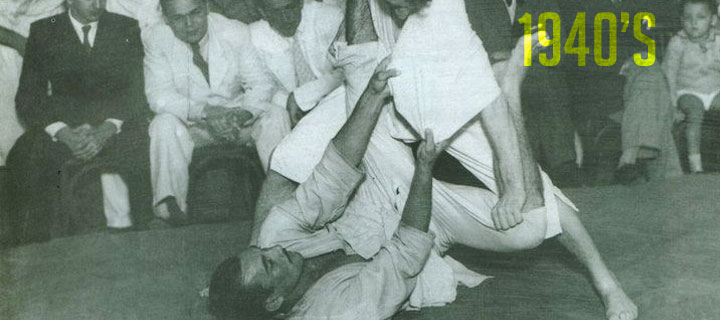
Although jiu-jitsu was regarded as a martial art for the upper classes for many decades, coaches still tried to implement this “ground zero” concept. For that purpose, the practice of gi/kimono handling was a responsibility of the academies. Students would receive their gis before the start of the class and would leave them there to be washed and kept, a common concept across Brazilian academies in the early days. All gis were white.
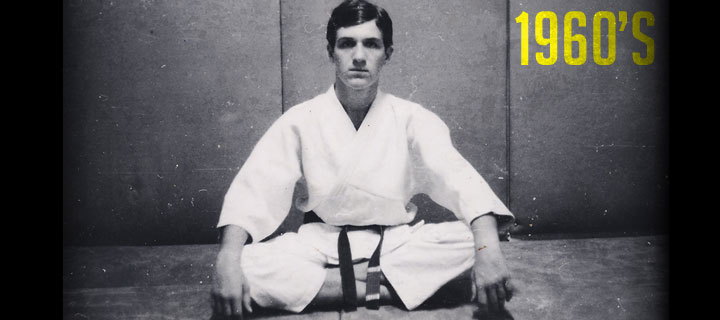
According to Reila Gracie’s book (Carlos Gracie Biography) the first splashes of color on the jiu-jitsu uniform, were implemented by Reylson Gracie, son of Carlos Gracie, during the ’70s. This decade represented a big shift in the whole appearance of the gi, which moved from it’s shorter sleeve design to the long sleeve look that prevails today. More than likely a result of having a new federation and a competitive environment with rules dedicated solely to this style.
The late 1980s saw the first sponsored athletes. Seeking to pay tuition and competition fees, some athletes started requesting financial gain from local businesses or bartering for commodities that went from free meals at local restaurants to free haircuts. In exchange, these competitors wore advertisement patches on their kimonos, for exposure during local tournaments, a practice that grew exponentially during the 1990s.
Socially, the sponsorship patches were of huge importance to the jiu-jitsu dynamic. If before their arrival, all men were equal and all gis the same, being the belt the only true differentiator, these gi patches ultimately meant that the man wearing them was a competitor, a tough guy. Regular guys wouldn’t be wearing patches, they were an emblem of a full-time jiu-jitsu athlete. In this practice Wallid Ismail was a great pioneer who marketed himself perfectly, being regarded as the first grappler to live solely from sponsorships as a jiu-jitsu competitor.
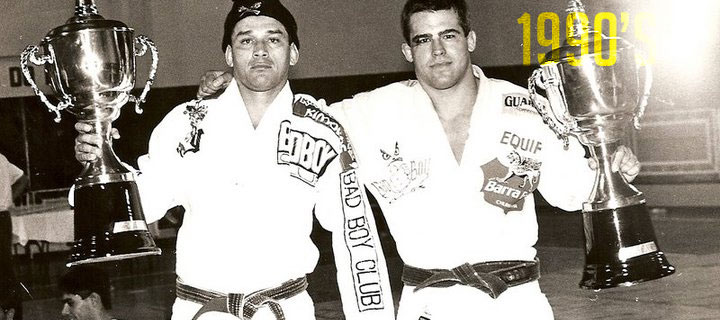
As jiu-jitsu grew out of a handful of Rio de Janeiro academies, and into a bigger, more widespread sport throughout the state, the first jiu-jitsu brands started emerging. After UFC 1 (1993), the Brazilian grappling style caught the eye of the American market, and the first international brands dipped their toes into BJJ.
The first US brand to open their doors to jiu-jitsu was Bad Boy. The San Diego, CA company first began producing T-shirts and shorts for local surfers, skaters, and motocross riders during the early eighties but decided to move into the combat sports market around the early 90s. In 1993 Bad Boy started their efforts to take over no-holds-barred and jiu-jitsu by supporting a series of Rickson Gracie seminars. One of those workshops made the cover story in a national magazine which set Bad Boy (BB) on the right path. One year later another big name entered the gi selling business, M Kimonos.
M Kimonos started as a small company named Hércules Quimonos, led by brothers Marcelo and Luciana Machado, who planned on producing gis solely for their academy (Gracie Tijuca). Their extensive research in weaves took them further than expected, and the excellence of their making pushed for demand outside their academy, which led them to develop M Kimonos (Machado Kimonos).
With the market clearly expanding, gi sponsorships became one of jiu-jitsu’s most coveted assets, and interesting marketing strategies developed from there. An example of those strategies took part between two of the top brands of the late 90s. While Bad Boy chose to support controversial athletes (Wallid Ismail, Vitor Belfort, Terere, etc), M Kimonos went on to sponsor competitors with a cleaner profile (Royler Gracie, Leka Vieira, Rodrigo Gracie, Robson Moura, etc). The athletes they sponsored became a great selling point for all customers.
While most of the brands at the time focussed on the weaves, in 1996 a new brand called Krugans pushed the boundaries of the cutting, designing the first jacket fully developed for the guard player. With no seams at the back, this gi allowed for a more comfortable guard play.
For years function dictated the jiu-jitsu gi design, and fashion was seen as a weaker man’s concern. Longer gis were produced for lankier people and shorter, wider cuts for the stocky grappler type. These matters were addressed by the manufacturing companies (more details on gi fittings here).
The American company OnTheMat (OTM), influenced the retail sector during the 2000s decade, by moving its manufacturing away from Brazil, and into Pakistan, this way affordind to lower the price of the gis. A big selling point to those with lower income.
In the mid/late 2000s, in came Shoyoroll (SYR). The Guam based brand developed several of today’s gi trends, such as contrast stitching, printed patches directly on the gis and limited edition batches. SYR also brought an urban look to the jiu-jitsu gi, merging the surfing/skating culture into jiu-jitsu’s battle wear. But most of all, SYR raised a more elitist tone to the jiu-jitsu gi, an aspect that totally revolutionized the market. What was once a functional piece of equipment, became an expensive and ostentatious (for some even collectors) item, digging up the social inequalities the old academies had tried to hide in the early days with their homogeneous uniforms.
If SYR brought the urban style to the BJJ gi market, others carried on the torch of innovation, bringing many more aspects of worldly culture into the external look of the kimono. One of the brands that stood out the most in recent years has been Scramble, with their Japanese influence and creative designs.
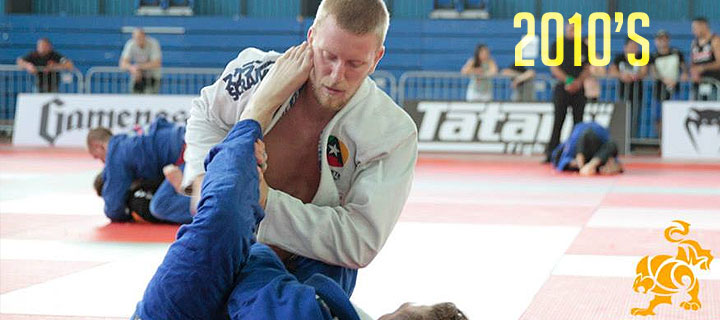
While many academies have thrived with the individual imprint available in today’s BJJ gi market, others stepped back into the old ways, leveling out the plain. The leading team in that regard has been Gracie Barra, who have their range of uniforms designed by Storm Kimonos.




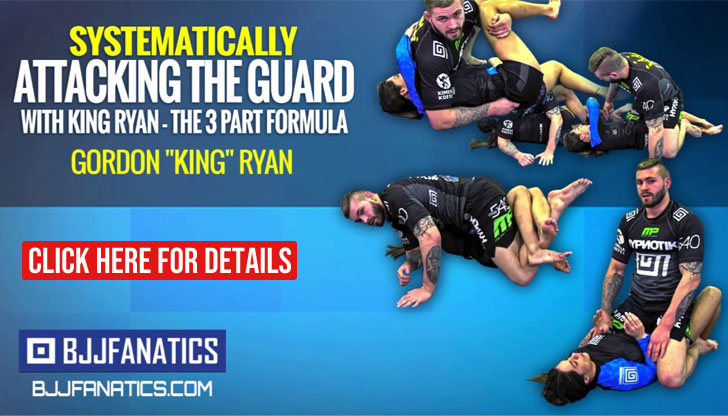
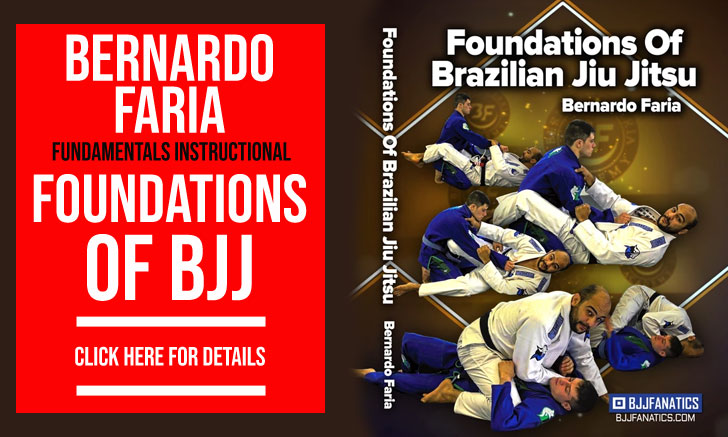










why isnt there any reference made to koral, they introduced the rubberised collar. atama is also a huge brand that was one of the first main bjj brands
Cool article! I think it's also worth mentioning Howard Liu, who from the interviews I've heard was an important early figure regarding gis. Also, the more recent hemp pioneers, most notably Datsusara, along with The Green Gi and Flow Kimonos.
How is it possible to do an article on the evolution of the gi and *not* include Origin?!?
Disappointing.
Someone has apparently never worn the best gi pants in the world 😉
Can't leave out Origin, who make their gi's in the US and have several fantastic proprietary weaves aimed at wicking sweat away from the body and possessing anti-microbial properties.
I still don’t get the difference between Brazilian Jiu-Jitsu and the Japanese version. Does the Japanese style also put more emphasis on the ground?